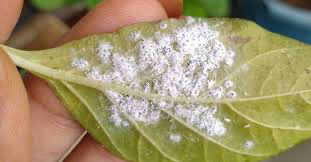When NOT to “Leave the Leaves”
When leaves drop in the fall, we advocate for the low-maintenance, high reward practice of “leaving the leaves” rather than collecting them in bags for the landfill. This provides free fertilizer (among many other benefits) however there are certain situations where you do NOT want to allow fallen leaves to decay in your soil. Premature leaf drop is of main concern.
Sometimes premature leaf drop is simply an issue of overwatering or underwatering. However when trees and shrubs drop their leaves/needles due to fungal issues, disease, or mite/insect pest problems raking up and removing them is for the best. Keep an eye out for discolored, spotted, fuzzy, or mangled leaves or needles that drop long before the fall - these may indicate an issue.
*Don’t leave infected leaves! (images 1 & 2)
Unwanted fungus often leaves spores on the fallen leaves that they’ve infected- allowing more spores to persist in the soil and reinfect next year’s leaves. Remove these.
*Don’t leave infested leaves! (images 3 & 4)
Certain pests lay eggs on or in leaves, so an insect-infested tree’s early fallen leaves or needles should be removed as well.
Although it can be confusing it is well worth learning the difference between when to leave the leaves for maximum benefit vs when to remove fallen leaves for protection.
If you notice early leaf drop, allow us to inspect your trees and shrubs. Repeat defoliations can lead to an early death for struggling plants.




